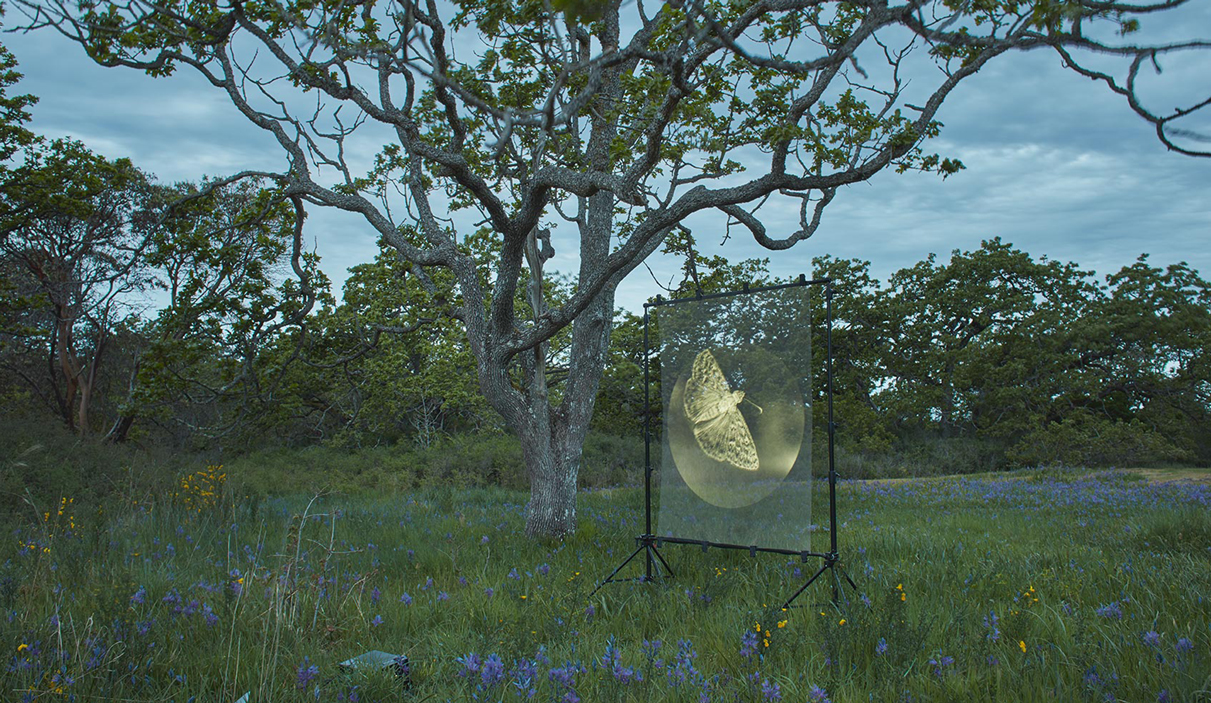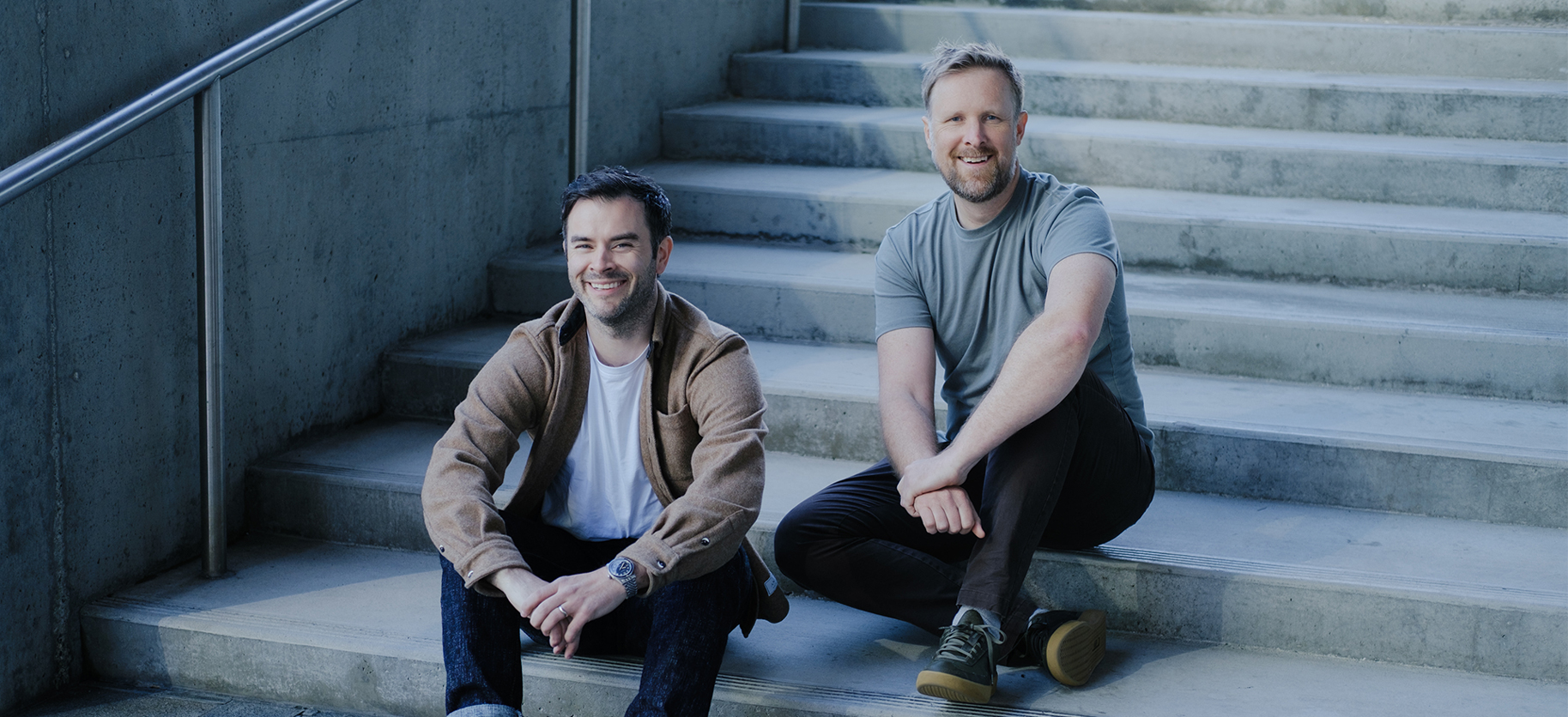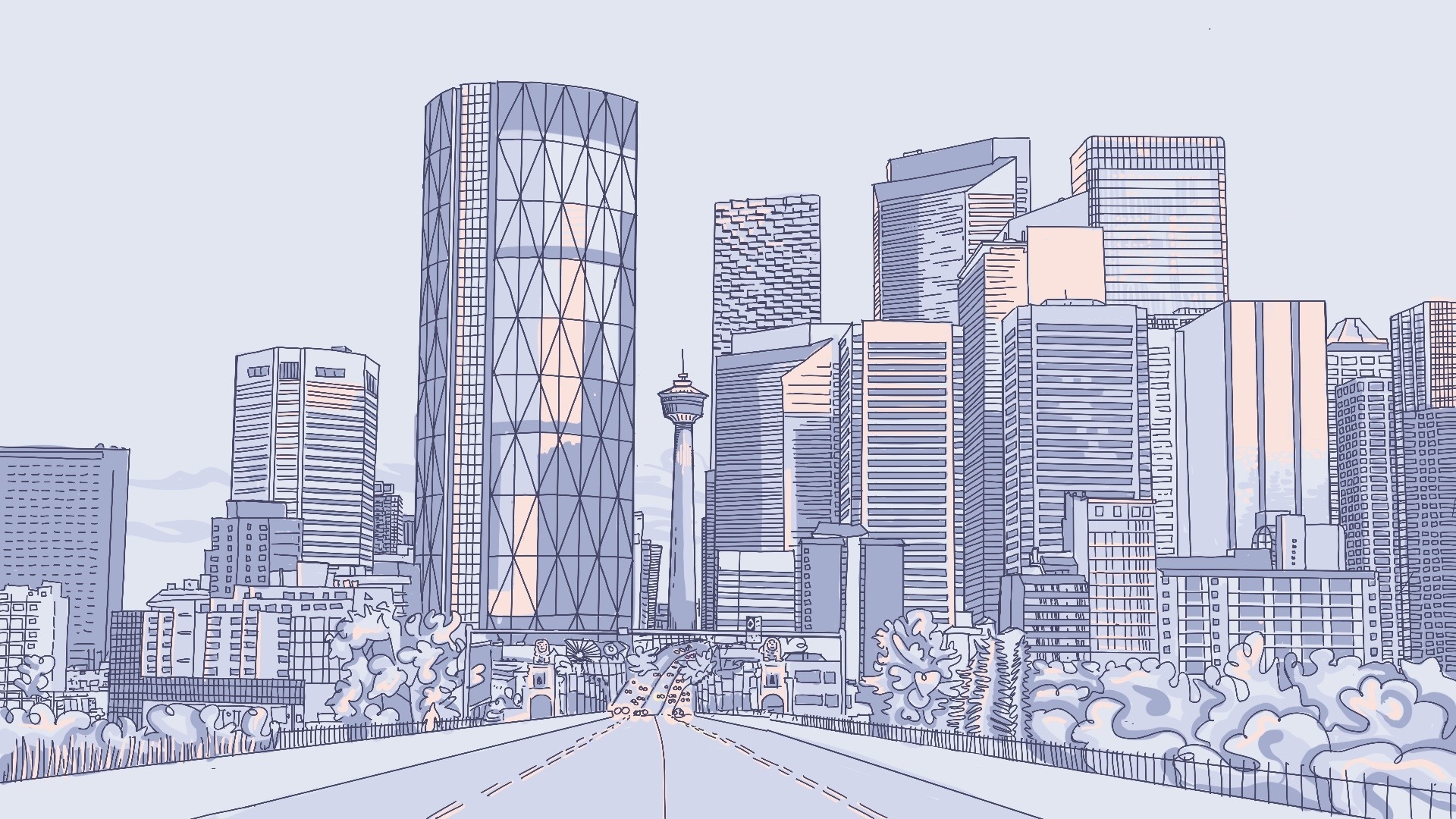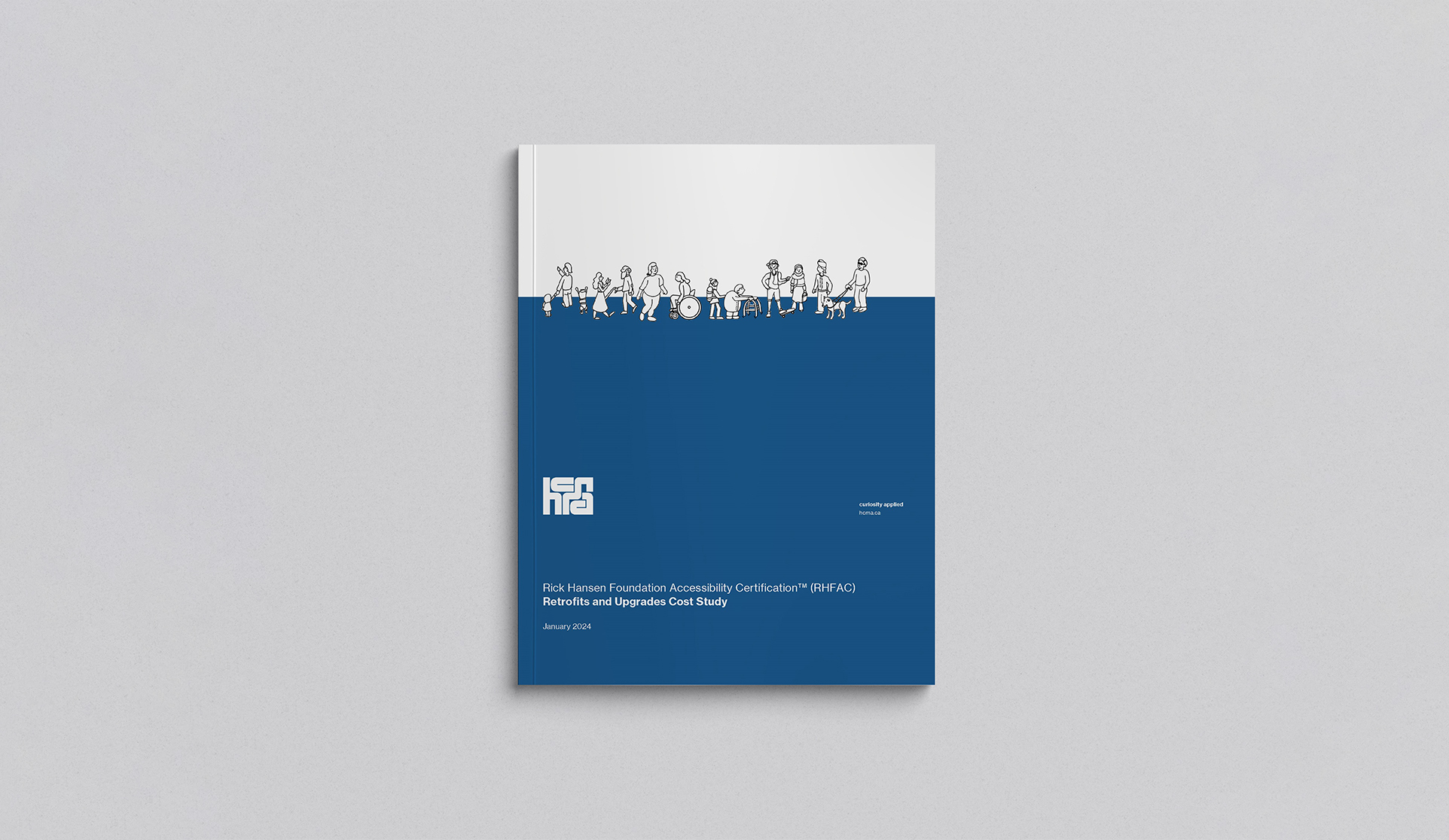
We’re delighted to share with you the work of our inaugural 2021 Artist in Residence, photographer David Ellingsen. The first of a three-part series, David’s residency was completed in Victoria, B.C, where he currently resides. For 10 weeks, each selected artist will focus on their practice, collaborate with staff, and share their process, techniques, and perspectives.
Following the theme of ‘Empty City’, David’s work turned toward the species that share our urban spaces. Photographs were made recording digital projections of endangered animals and plants, within their native habitats, to address the mounting extinction crisis in the Capital Regional District of Victoria. David’s haunting images show that while our cities have quietened temporarily, the organisms we share our space with are experiencing a more permanent change.
As designers, the emphasis in our work is often on addressing large scale environmental concerns. David’s work has brought into sharp focus the impact of the built environment on ecology. Whether at the scale of an orca or a small plant, we need to better understand the relationship of building to the natural, breathing world and our design responsibility in it.
Artist Statement
During the research stage, it became apparent that the primary cause of the crisis is human-caused loss of pristine habitat, specifically through urban development, industrial resource extraction, and the loss of farmland. With the population of southern Vancouver Island projected to increase by almost 90,000 people by 2038, it seems likely our wild spaces will continue to decline unabated. The province of British Columbia reflects a similar trajectory, with over 1,300 species currently at risk of extinction.
To speak to both great and small, the species selected reflect the instantly recognizable killer whale, the reclusive Barn Owl, the plain Propertius Duskywing moth, and the little-known plant Footsteps of Spring.
Orca
The Southern Resident killer whales of the Pacific Northwest (Orcinus orca) have a high probability of becoming functionally extinct by approximately 2116, within the feasible lifespan of a human born today. Functional extinction occurs when a population falls below the number of breeding adults necessary to sustain itself. Increasingly it has become apparent that the decline in Chinook salmon, the orca’s primary diet, is the largest factor. Pollution also plays a part, typically ending up as toxins within a whale’s blubber. When a whale cannot find enough to eat, they metabolize this fat to maintain energy levels which releases the toxins stored within to the bloodstream, creating a terrible combination of starvation and poisoning.

Barn Owl
Barn owls (Tyto alba) around the Capital Region have been in steady decline for some years. Fragmentation and loss of habitat due to land development is the primary cause. Poisoning is also an urgent issue as much of the owl’s diet consists of rodents made toxic by humans attempting their eradication.

Duskywing Moth
The Propertius Duskywing Moth (Erynnis propertius) lives primarily in Garry Oak ecosystems, which are in decline across the Capital Region and all the way up to the Comox area, the northernmost reach of their habitat in North America. The majority of these ecosystems are privately owned and consequently under continued threat of development.

Footsteps of Spring
A small plant blooming cheerful bright yellow in the spring, and located in one small area in Victoria, the Footsteps of Spring (Sanicula arctopoides) is one of the most endangered plants in Canada. It inhabits a 300-metre strip of land (for the most part only 2 metres wide) along the western edge of Harling Point. There is little awareness that this beautiful plant even exists, much less that it is projected to be extirpated in 10 to 20 years through a combination of land development, erosion and the unintended, yet oblivious foot traffic of people and their dogs.
Long known as “Super Natural”, British Columbia has been recognized as a destination where access to wild, untamed space was always close to hand. Reflecting a global trend of human development, with further impacts of climate breakdown and pollution, the public is now awakening to the fact that this is no longer so.
Production Notes
COVID
Like many over 2020 and 2021 this project felt the impacts of the Covid 19 pandemic and adjustments were necessary to the original direction. One of the most noticeable of these was a change in the intended public presentation of the work. Originally intended as outdoor, site-specific projections around Victoria to raise public awareness of the extinction crisis, when the time approached the province was well into the third wave of infection and the decision was made that encouragement of gatherings of any size was not appropriate. Instead, I headed out alone to quieter locations within the city to make the images, eventually releasing the final photographs through social media to maintain the original public-facing element of the project.
Urban Development
An artist residency sponsored by an architectural firm while speaking to species extinction is no small matter. By definition transforming the rural to the urban, I must confess to respectful admiration (and a little surprise) when hcma accepted my proposal for this artistic investigation. As mentioned earlier, urban development is one of the primary causes of loss of biodiversity and for a corporation directly involved to open themselves to scrutiny speaks courageously of their decision-makers 'walking the walk' behind the stated intent of the program.
Research Notes
Orca
https://a100.gov.bc.ca/pub/eswp/speciesSummary.do?id=24242
https://www.whaleresearch.com/orcassalmon
Functional extinction
Barn Owl
https://a100.gov.bc.ca/pub/eswp/speciesSummary.do?id=14636
Red List, Capital Regional District
1. Citation: B.C. Conservation Data Centre. 2021. BC Species and Ecosystems Explorer. B.C. Minist. of Environ. Victoria, B.C. Available: https://a100.gov.bc.ca/pub/eswp/ (accessed Jun 21, 2021).
Propertius Duskywing
https://a100.gov.bc.ca/pub/eswp/speciesSummary.do?id=16174
Red List, Capital Regional District
1. Citation: B.C. Conservation Data Centre. 2021. BC Species and Ecosystems Explorer. B.C. Minist. of Environ. Victoria, B.C. Available: https://a100.gov.bc.ca/pub/eswp/ (accessed Jun 21, 2021).
Footsteps of Spring (aka Bear’s Foot Sanicle)
Q+A. April 19, 2021
David Ellingsen: How long do you expect Footsteps of Spring to remain at Harling Point based on current conditions?
Dr. Brian Starzomski: I would say that one really big storm could take out half the population due to erosion of the banks, and the entire population at Harling Point probably has 10-20 years because of foot traffic from people and dogs at the site. With increased use of this area the various plants there are all at risk.











